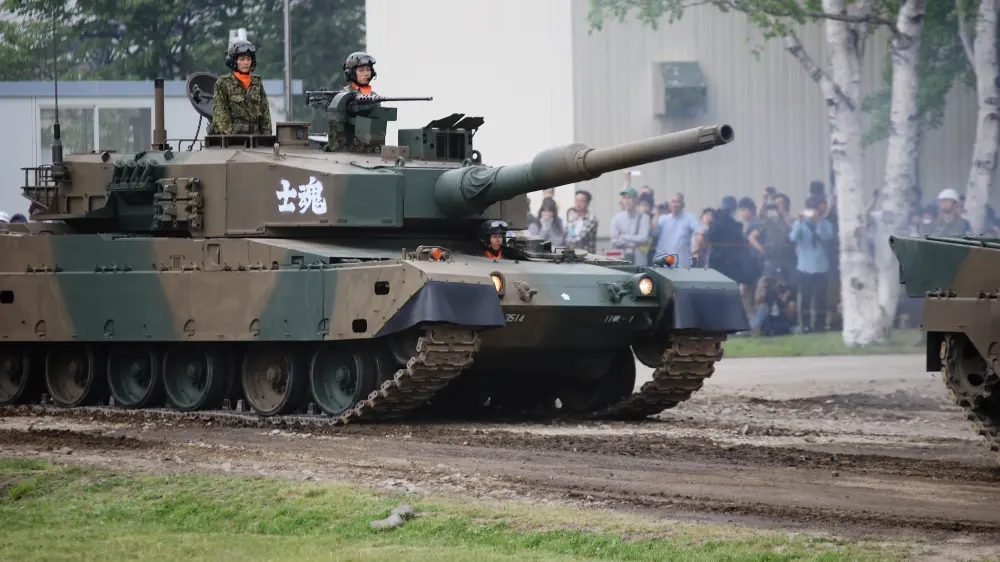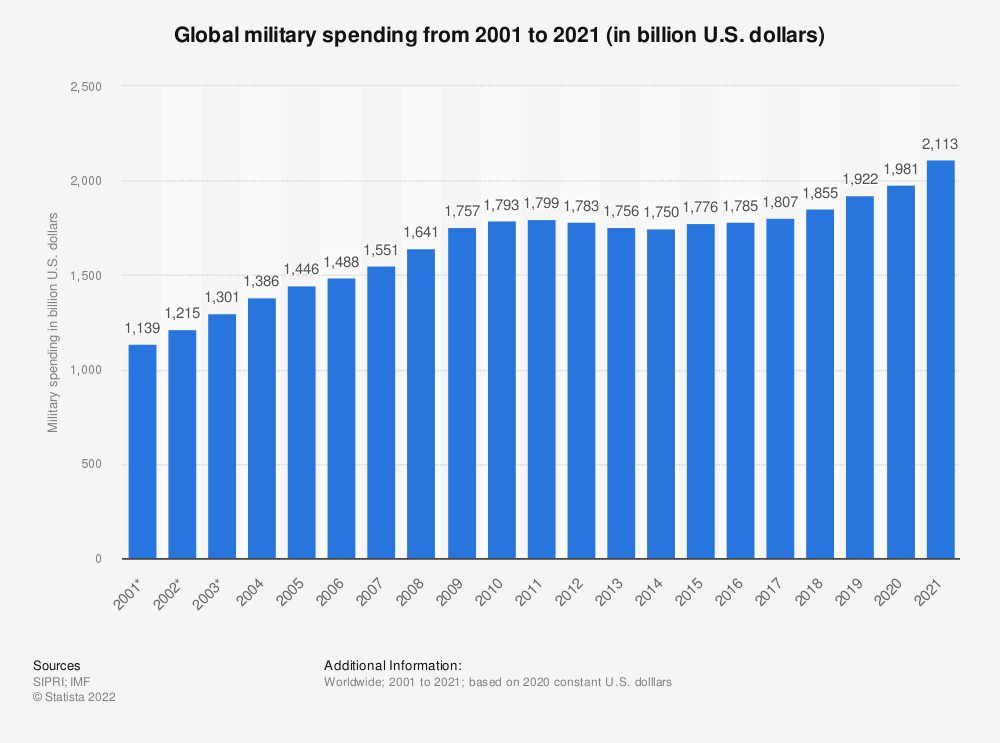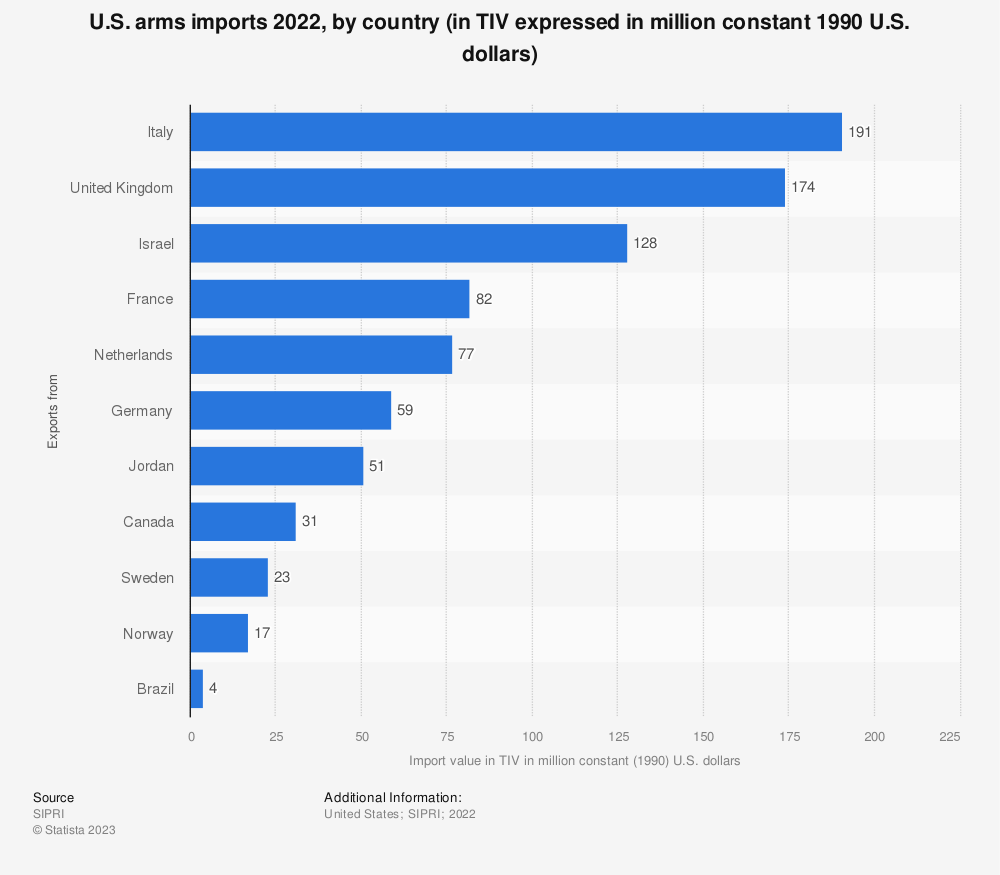Due to geopolitical tensions, Japan and Switzerland are arming themselves. This may be a harbinger of a strong increase in weapons bought and sold worldwide. Will Russia’s invasion of Ukraine finally shatter the illusion of neutrality?
Table of contents:
Switzerland and Japan are arming, a sign of a new global trend. Switzerland – the symbol of neutrality – plans to increase its arms spending in response to growing global geopolitical tensions.
Meanwhile, Japan, which has been demilitarized since World War II, will also invest heavily in its defense system as a potential threat from Russia and China. These decisions by governments in Bern and Tokyo show a broader trend that may affect the markets and economies of both exporters and importers of arms.
1. Why Is Japan Arming?
At the end of December, Japan approved a 26.3% increase in defense spending for 2023*. Unlike Switzerland, Japan is not a neutral country. It is a member of various international organizations and has close relations with the United States. The country’s military is known as the Japan Self-Defense Forces. As the name suggests, the Asian military has not been involved in any wars since WWII. However, it has participated in several international peacekeeping missions.
So far, Japan has not been investing heavily in military equipment. Japan’s post-World War II constitution renounces war and prohibits Japan from maintaining a standing military to settle international disputes by force. Additionally, Japan has a pacifist culture. However, the war in Ukraine has forced Japan to change its stance.
The government in Tokyo has been increasing its defense budget recently and investing in new military equipment, such as F-35 fighter jets and submarines, to enhance its defensive capabilities.

2. What Happened In Switzerland?
Switzerland has a longstanding policy of political neutrality and has not been involved in any international conflicts since 1815. Neutrality is enshrined in its constitution, and the country maintains a policy of armed neutrality, which means that while it has a military, it does not take part in any military alliances or interventions.
Things changed in 2022 after the Russian invasion of Ukraine and the ensuing national security discussions. Switzerland gradually increased it to CHF 7 billion/€6.8 billion until it reaches at least 1% of GDP by 2030 . According to defense minister Viola Amherd, the budget increase would allow the armed services to “close capability gaps faster than previously anticipated,” she said in parliament on Thursday, April 13.
What will Switzerland spend the money on? Among others for anti-missile trade. In late March, the media reported** that Switzerland would join many other countries in purchasing the Patriot system. Other key investment plan points are additional cybersecurity spending and new F-35 fighters.
Read also: 4 Factors Behind the 2023 Natural Gas Price Plunge
3. Switzerland And Japan Are Arming. How The Global Military Industry May Change
Recent years have increased tensions between major political, economic, and military countries, including the United States, China, and Russia. At the same time, technical developments like cyberwarfare, robots, and artificial intelligence are altering the character of conflict and opening up new avenues for military innovation and investment.
Analysts argue climate change will likely lead to increased instability and conflict in certain regions, which could drive demand for military and security solutions.
3.1. COVID-19 Pandemic Highlights the Importance of Military and Defense Capabilities
We may also still see the effects of the COVID-19 pandemic, which have highlighted the importance of preparedness and resilience, and could lead to increased investment in military and defense capabilities.
Some countries are shifting their priorities from traditional military spending to other areas, such as healthcare, education, and infrastructure. These factors should make the military and arms industry likely to play an essential role in global affairs. Still, the direction and scale of investment will depend on various factors, including geopolitical tensions, technological advancements, and changing priorities.
4. Switzerland And Japan Are Arming While Imports Of Arms Are Growing
Between 2013-17 and 2018-22, large arms imports by European countries rose by 47%, while transfers of armaments internationally fell by 5.1%. Arms imports decreased (-40%) in the Americas (-21%), Asia and Oceania (-7.5%), and the Middle East (-8.8%), but they increased significantly in East Asia and other nations in other regions with high geopolitical tension.
New information on global arms transfers released recently by the Stockholm International Peace Research Institute (SIPRI) shows that the United States’ proportion of exports climbed from 33 to 40% while Russia’s decreased from 22 to 16%.
4.1. US Arms Exports Rise By 14%, And Russia’s Plummets By 31%
The United States and Russia have continuously been the world’s most significant and second-largest weaponry exporters over the past three decades. However, the distance between the two has been growing and decreasing between Russia and France, the third-largest supplier.
- Between 2013–17 and 2018–22, US arms exports rose by 14%.
- In 2018–22, the US accounted for 40% of all international arms exports.
- At the same time, Russia’s weapons exports plummeted by 31%, and worldwide weapons exports fell from 22% to 16%.
- France’s weapons exports also rose, in this case by 44%. Most exports were made to countries in the Middle East, Asia, and Oceania. In 2018–22, France replaced the United States as India’s second-largest arms exporter after Russia, receiving 30% of France’s total arms exports.
5. The US Leads Middle East Arms Imports, Followed by France and Russia
5.1. Ukraine
Ukraine is the third-largest importer of weapons worldwide. Few significant armaments were bought by Ukraine from 1991 until the end of 2021. Following the Russian invasion of Ukraine in February 2022, military assistance from the USA and numerous European nations helped Ukraine rank third among major arms importers in 2022 (behind Qatar and India) and fourteenth overall for 2018–2022. Ukraine accounted for 2.0% of all imported armaments in the past five years.
5.2. Saudi Arabia, Qatar, and Egypt
The countries mentioned above were three of the top ten importers in the Middle East between 2018 and 22. In 2018–22, Saudi Arabia was the second-largest weaponry importer in the world, taking in 9.6% of all imports. Qatar became the third-largest arms importer in the world in 2018–22 as a result of a 311% rise in its weapons purchases between 2013–17 and 2018–22.
5.3. The United States
The Middle East imported 54% of its weapons from America, with France (12%), Russia (8.6%), and Italy (8.4%) following. They featured 13 frigates, 516 brand-new tanks, and over 260 cutting-edge combat aircraft. Arab nations have purchased more than 180 combat aircraft in the Gulf alone, while Iran (which got almost no significant armaments between 2018 – 22) bought 24 from Russia.
5.4. South East Asia
South East Asian weapons imports fell by 42% during 2013–17 and 2018–22. States are still absorbing equipment supplied before 2018, which may have contributed to this drop. The Philippines defied the trend with a 64% surge in gun imports.
As they tried to bolster their arsenals in response to a perceived increased threat from Russia, European NATO nations raised their purchases of guns by 65%.
Due to tensions between the two countries, the United States drastically reduced its arms supplies to Turkey during 2013-17 and 2018-22. Turkey dropped from the seventh to the 27th largest recipient of US weapons.
5.5. Sub-Saharan Africa
Sub-Saharan African states decreased their weapons purchases by 23%, with Angola, Nigeria, and Mali being the top customers. Russia surpassed China as the region’s top supplier of weapons.
Three countries in the Americas had largely insignificant imports of arms: the USA (+31%), Brazil (+48%), and Chile (+56%).
After the United States, Russia, and France, the top seven countries for exporting arms were: China (-23%), Germany (-35%), the United Kingdom (-35%), Spain (-4.4%), and Israel (-15%). Italy (+45%) and South Korea (+74%) saw significant increases in their arms exports.
6. Arms Sales: How Currency Traders Can Profit from the Biggest Importers and Exporters
The trend is clear, and margin traders should remember it is trading forex pairs, including the currencies of the top importers and exporters. The first will have their budgets stretched, while the latter should use arms sales to strengthen their currencies. Additionally, the incoming contracts should create big spikes in the prices of weapons manufacturing companies.
*https://thediplomat.com/2022/12/japan-approves-26-3-increase-in-defense-spending-for-fiscal-year-2023/
**https://www.army-technology.com/news/patriot-systems-begin-to-spring-up-around-europe/



